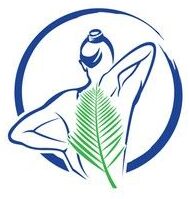Leg pain and fatigue are common complaints. Your feet, toes, and ankles—and really all the muscles surrounding them—have to work hard all day long, whether you’re wearing high heels, standing for long periods of time during the day, or just jogging down the sidewalk for a tough workout. Plus, as we age, our feet start to show signs of age, no matter how many times we try the baby foot scrub. Using a foot massager can improve blood circulation, reduce inflammation, and soothe and stretch tired, aching feet.

“One of the most common functional deformities is hyperpronation, or flat feet, which is known to be the cause of a variety of conditions, including bunions, hammertoes, and plantar fasciitis,” says Los Angeles podiatrist Albert A. Nejat, DPM, FACFAS. 1 2 “Stretching the feet, especially the calves and hamstrings, can be very beneficial in reducing foot pronation and other problems.”
Since movement and stretching are some of the best ways to relieve stiff, sore feet , try doing these quick foot and toe stretches about three times a day to keep them healthy. (Consider adding a few other stretches to your routine while you’re at it— lower back stretches are a good place to start .)
How to Massage Your Feet to Relieve Lacrosse Ball Pain
Standing Calf Stretch (or Running Calf Stretch)
One of the best foot stretches is the basic calf stretch. “There are two calf muscles —the soleus and the gastrocnemius—that meet at the ankle to form the Achilles tendon. They’re responsible for the movement of the foot,” says Jane Andersen, DPM, a podiatric orthopedist in North Carolina and a spokeswoman for the American Podiatric Orthopedic Medical Association. “These muscles are notorious for being tight, so the best way to loosen them up is to do the classic runner’s stretch, preferably after exercise when the muscles are already warmed up.”

How to do it:
Stand facing a wall and place your hands against it. Switch legs: Keep your front leg bent and your back leg straight back. Try to press your heel into the ground and lower it until you feel a good stretch in your calf. Dr. Andersen recommends holding the stretch for 30 seconds on each side to deepen the stretch. You can do this stretch as part of a workout or on its own (even while brushing your teeth or waiting for your tea to brew).
Stretching the toes
“There are muscles inside the foot that help move the toes, which are located between the metatarsal bones, and prevent them from curling in, which can eventually develop into hammertoes,” says Dr. Andersen. “As we age, the muscles between the toes weaken, so stretching them can slow the degeneration process.”

How to do it: Imagine your foot as a hand and spread your toes like you spread your fingers, opening and closing them in a controlled manner. Aim to do eight to 10 stretches (one of which is toe pointing and lifting) two or three times a day.
Seated calf and hamstring stretch with a strap
If you often wake up with stiff legs and feet, try doing this exercise right after waking up, before getting out of bed.

How to do it: Sitting on the floor or in bed with your legs straight, “place the middle of a non-elastic strap under your right front foot. You can use a leather strap, a yoga strap, or even a towel,” says Dr. Nejat. Keeping your right knee slightly bent and your back straight, gently bend your right foot, drawing your toes “up until you feel a stretch in the back of your calf. Hold for about 20 seconds on each side, and try not to bounce your foot.”
Slowly bend and straighten your right knee for about 20 seconds.
Finally, keeping your right leg straight, gently rotate your torso forward toward your knee to further stretch your right biceps femoris .
If you regularly take care of your feet and toes by doing simple stretches like these, you can combat some of the aches and pains that often come with physical activity and age, and your feet will stay healthy (and injury-free) for many years to come.









